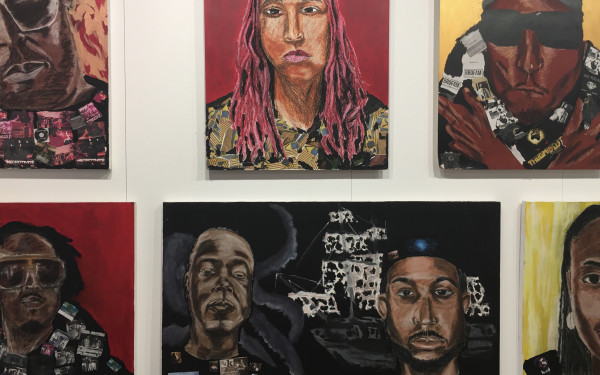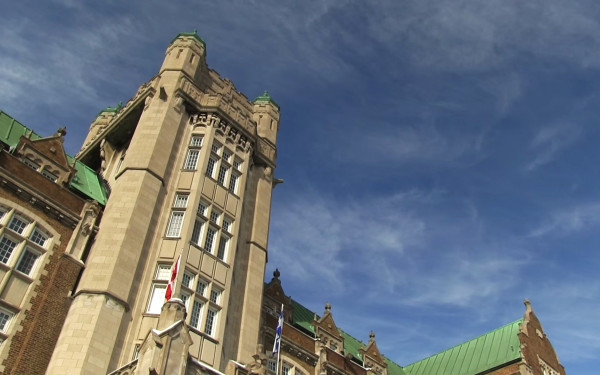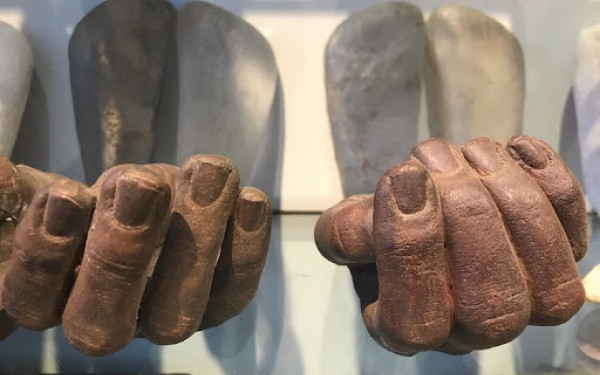Five-Point-Palm Exploding Art Technique
New Art Exhibit ‘Hybrid Bodies’ Examines the Psycho-Social Effects of Heart Transplantation
No organ in the human body is as coveted as the heart.
In poetic terms, it is the primal source of our most profound emotions, and can be given to—or shattered by—the ones closest to us. In bio-medical terms, it breathes life into our veins with every faithful beat, and when it ceases to function, we cease to exist.
But what happens when this highly significant cog of human machinery is passed from one to another in a surgical transplant? Will the recipient forever hear a tell-tale heart drumming in their chest?
Interdisciplinary artist, Concordia studio arts professor and one of the founders of the Hexagram: Media Arts Institute, Ingrid Bachmann has aimed a philosophical arrow at the idea of the heart—and the emotional and psychological ramifications a transplant between humans can have.
Bachmann is a participating artist and researcher for Hybrid Bodies, an exhibition linking art and medical science opening on Jan. 22 at the PHI Centre. She focused her contributing work on the emotional reactions of such a significant gift and the idea of shared boundaries that heart donation involves.
She stressed how overwhelming the sense of gratitude is among heart transplant recipients, and in an individualistic society such as ours, this feeling of gratitude comes with a certain discomfort and uneasiness.
“We are a culture that’s very uncomfortable with the notion of ‘gift,’ unlike the First Nations, who entrench giving and reciprocity as a fundamental element of their culture,” Bachmann said.
“In many ways, the project is personal and individual but there is also a larger part of social and cultural elements on how we talk about death, ownership and gifts.”
To illustrate her ideas, Bachmann chose to work with Concordia dance students Linnea Gwiazda and Maxine Segalowitz on a filmed performance. For her piece, several video sequences play simultaneously on four different screens, creating an effect of fluidity and movement. Bachmann said the medium of dance illustrates the abstract experience of an internal psychological struggle.
“I really felt I needed to get out of my comfort zone,” she said. “When things are invisible, such as heart transplants, there is a real complexity about what is perceived and not perceived.
“I wanted to do more abstract performance of language with the body.”
The Scientific Method
In 2010, seven doctors and researchers formed a research team known as the Process of Incorporating a Transplanted Heart, and published a pioneering essay called “What They Say Versus What We See: ‘Hidden’ Distress and Impaired Quality of Life in Heart Transplant Recipients” in the Journal of Heart and Lung Transplantation.
Feeling their message could be better received through a different medium, the team approached four international artists to give a voice to their patients’ emotional distress and uncertainties.
The artists were Bachmann and Catherine Richards from Canada, and Andrew Carnie and Alexa Wright from the U.K. Hybrid Bodies is their collective effort together.
From multi-channel video installations, to digital three-dimensional photography, sculptural pieces and sound works, Hybrid Bodies offers a wide range of different perspectives and approaches to the complex matter of heart transplants.
After having studied the video footage of several interviews of patients that have undergone the operation, each artist interpreted and illustrated the issue in their own distinctive ways. To a certain extent, these interpretations reflect the different facets of the emotional coping process that many of them experience.
Visual artist Richards concentrated her piece, “Charged Hearts,” on the notions of artifact, gratitude and gift giving. She does so through the transformation of the heart as an object, molded into different shapes and built with several materials, such as glass and metal.
On a different level, Carnie’s work, “Seized Out of this World,” conveys the ideas of vulnerability and far-reaching self-consciousness that he perceived in the different testimonies. His video installation showcases nude human bodies interlocking and creating different organic, biological shapes, shifting as if fluid.
“Some believe that they take on characteristics of someone else in a sort of vague way [after a heart transplant],” said Carnie. “Even if they’re not, the fact that they’re thinking about it is really important, so they become destabilized. They enter this flux, looking at themselves, thinking about themselves.
“Them being naked reflects our vulnerability to the whole procedure—we just become something that they’re going to operate on, a clinical object,” he continued. “It had that resonance of that vulnerability.”
Pushing the metaphor even further, Wright developed her piece, “Heartfelt” around the symbolic meaning of the heart. She merges cultural meanings around the exchange of hearts—love, relationships and emotions—with the literal exchange of hearts implied in the donation.
Using sound effects, she juxtaposes interviews of people expressing the difficulties they experience with love and relationships with people expressing their emotions following a life-saving heart transplant.
“Alexa links the symbolic aspect of the heart as the seed of love and its incredible weight in our culture with the physical effect of heartbreak and transplantation,” said Bachmann.
The artists invite show-goers to draw their own conclusions after visiting the exhibit—you’ll likely find a newfound appreciation for that tireless muscle in your chest upon leaving.
“We are not looking for facts neither claiming that our work is truth,” Bachmann said. “We only reveal big questions about life, death and identity.”
Hybrid Bodies // Jan. 22 to Mar. 15 // PHI Centre (407 St. Pierre St.) // Monday to Friday 12 p.m. to 6 p.m., Saturday 12 p.m. to 5 p.m. // Free admission

_900_673_90.jpg)

_829_1050_90.jpg)
_600_832_s.png)


2_600_375_90_s_c1.jpg)

